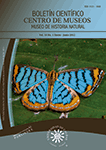Authors
Abstract
Four 1 hectare permanent monitoring units were established in forests of each of the departments with jurisdiction in the buffer zone of Los Nevados National Park, carrying out 4 measurements over a period between 1999 and 2010. For the assessment of diversity within each of the 4 ecosystems used, three groups of measures were performed corresponding to: the rates of species richness, relative abundance rates of species and abundance rates of species with which the alpha diversity was determined. Similarly, the beta diversity between each of the sampling sites was tested, using for this purpose the similarity and dissimilarity measures proposed by (Halffter(1992) and (Magurran(1988), finding that there is a high rarity of species in the buffer zone of Los Nevados National Park forests, especially in the Regional Park Ucumarí (Risaralda). Based on the aforementioned, it was determined that each of the ecosystems evaluated: Ucumarí Regional Park, Protected Natural Area La Montaña (Quindio) Tower 4 (Caldas) and El Palmar (Tolima), show high heterogeneity in alpha diversity. On the other hand, similarity relations are quite low between ecosystems evaluated, demonstrating a high beta diversity and little connectivity present in the park buffer zone, derived from geomorphological and anthropogenic factors. However, each area independently contributes to the conservation of ecosystems within and outside Los Nevados National Park, so it is advisable to preserve this mosaic of habitats.
References
CAVIEDES, B. M. 1999. Manual de métodos y procedimientos estadísticos. Universidad Jorge Tadeo Lozano, Bogotá. 67 p.
CHIARUCCI, A., ENRIGHT, N. J., PERRY, G. L., MILLER, B. P. & LAMONT, B. B. 2003. Performance of nonparametric species richness estimators in a high diversity plant community. Diversity and distributions. 9 (4): 283-295.
CUESTA, F., PERALVO, M. & VALAREZO, N. 2009. "Los bosques montanos de los Andes Tropicales. Una evaluación regional de su estado de conservación y de su vulnerabilidad a efectos del cambio climático". Serie Investigación y Sistematización # 5. Programa Regional ECOBONA – INTERCOOPERATION. Quito.
FINEGAN, B. 1996. Pattern and process in neotropical secondary rain forests: the first 100 years of succession. Trends in ecology and evolution 11: 119-124. (en) GUARIGUATA, M., KATTAN, G. Ecología y conservación de bosques neotropicales. Libro Universitario Regional Cartago (Costa Rica).
GENTRY, A. H., 1988. Tree species richness of upper Amazon forest. Proceedings of the National Academy of Sciences 85: 156-159. (en) GUARIGUATA, M., KATTAN, G. Ecología y Conservación de Bosques Neotropicales. Libro Universitario Regional Cartago (Costa Rica).
GENTRY, A. H. 1995. Patterns of diversity and floristic composition in neotropical montane Forests: 21-26 (in). CHURCHILL, S. P., BALSLEV, H., FORERO, E. & LUTEYN, J. L. (eds.) Proceedings of the Neotropical Montane Forest Biodiversity and Conservation Symposium, the NYB. The New York botanical Garden.
GÓMEZ, L., LINERA, G. 2006. Evaluación de métodos no paramétricos para la estimación de riqueza de especies de plantas leñosas en cafetales. Sociedad Botánica de México. México.
GÓMEZ, P., A. WHITMORE, T. C. & HADLEY, M., 1.991. Rain forest regeneration and management. UNESCO and The Parthenon Publishing Group. Man and the Biosphere Series. New Jersey. 457 p.
HALFFTER, G. 1992. La diversidad biológica en Iberoamérica I. CYTED-D. Programa Americano de Ciencia y Tecnología para el Desarrollo. Instituto de Ecología, A. C. México. 388 p.
HILL, K. & HAMER, K. C., 1998. Using species abundance models as indicator of hábitat disturbance in tropical forests. Journal of Applied Ecology, 35: 458-460.
JORGENSEN, P. M., & LEON-YANEZ, S. (eds.) 1999. Catalogue of the vascular plants of Ecuador. Missouri Botanical Garden Press. St. Louis.
JOSSE, C., CUESTA, F., NAVARRO, G., BARRENA, V., CABRERA, E., CHACÓN-MORENO, E., FERREIRA, W., PERALVO, M., SAITO, J. & TOVAR, A., 2009. Ecosistemas de los Andes del norte y centro. Bolivia, Colombia, Ecuador, Perú y Venezuela. Secretaría General de la Comunidad Andina, Programa Regional ECOBONA-Intercooperation, CONDESAN, Proyecto Páramo Andino, Programa BioAndes, EcoCiencia, NatureServe, IAvH,LTA-UNALM, ICAE-ULA, CDC-UNALM, RUMBOL SRL. Lima.
KESSLER, M., 2002. The elevational gradient of andean plant endemism: Varying influences of taxonspecific traits and topography at different taxonomic levels. Journal of Biogeography, 29: 1159-1165.
KESSLER, M., HERZOG, S. K., & FJELDSA, J., 2001. Species richness and endemism of plant and bird communities along two gradients of elevation, humidity and land use in the Bolivian Andes. Diversity and Distribution, 7: 61-67.
MAGURRAN, A., 1988. Ecology diversity and it's measurement. Princeton. New Jersey. 179 p.
MORENO, C. E., 2001. Métodos para medir la biodiversidad. M&T-Manuales y Tesis SEA. Vol. 1. Programa Iberoamericano de Ciencia y Tecnología para el Desarrollo. Oficina Regional de Ciencia y Tecnología para América Latina y el Caribe, UNESCO. Ed. GORFI. Zaragoza, 86 p.
MYERS, N., MITTERMEIER, R. A., MITTERMEIER, C. G., DA FONSECA, G. A. B., KENT, J., 2000. Biodiversity hotspots for conservation priorities. Nature, 403: 853-858.
VALAREZO, V. G., GÓMEZ, J., MEJIA, V., CELLERI, Y., 2001. Plan de manejo de la Reserva de biosfera Sumaco, Fundación Bioparques Tena, Ecuador. 2001.
VARGAS, W., 2002. Guía ilustrada de las plantas de las montañas del Quindío y los Andes centrales. Universidad de caldas. Manizales.

 PDF (Español)
PDF (Español)
 FLIP
FLIP


















